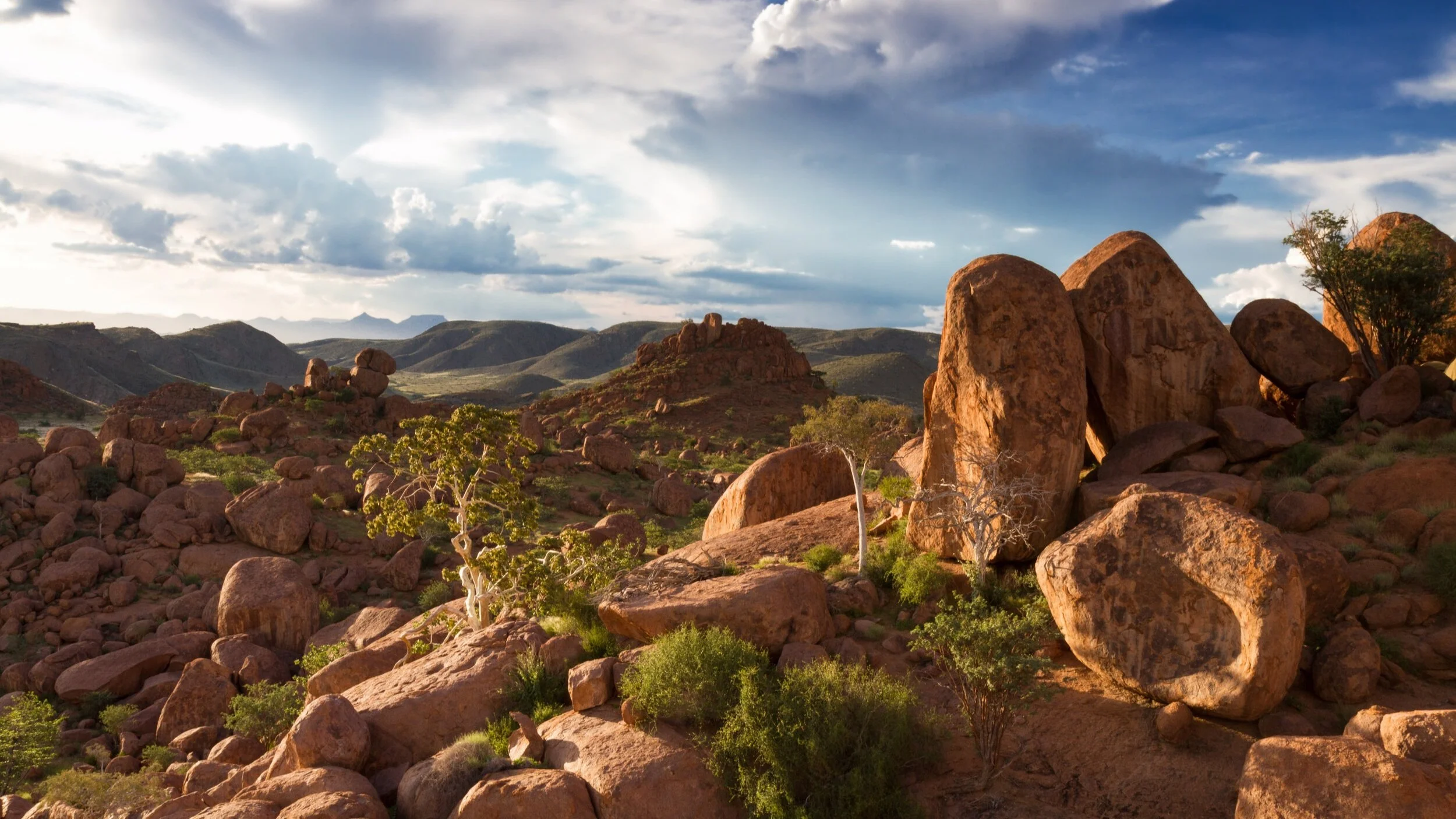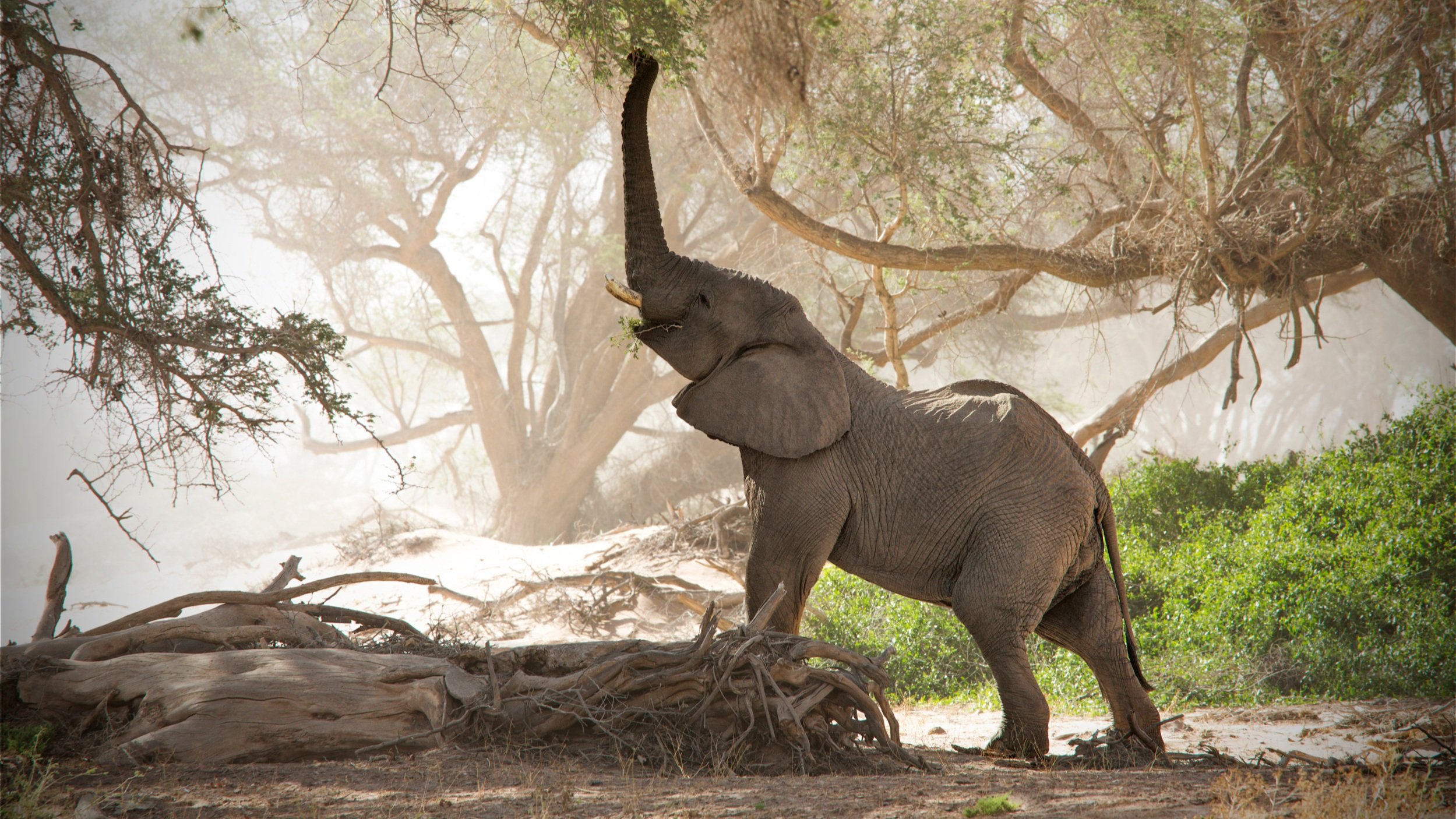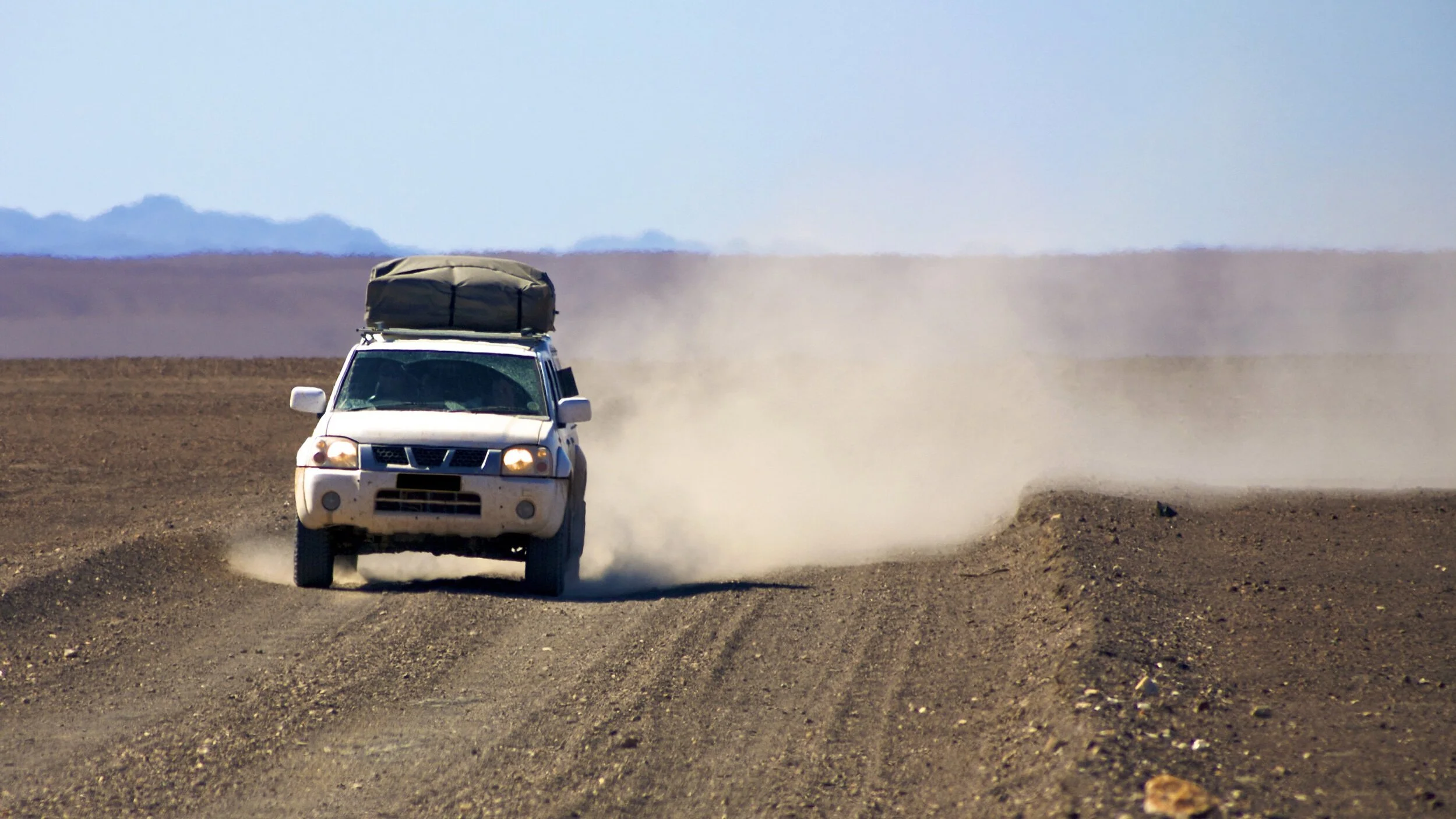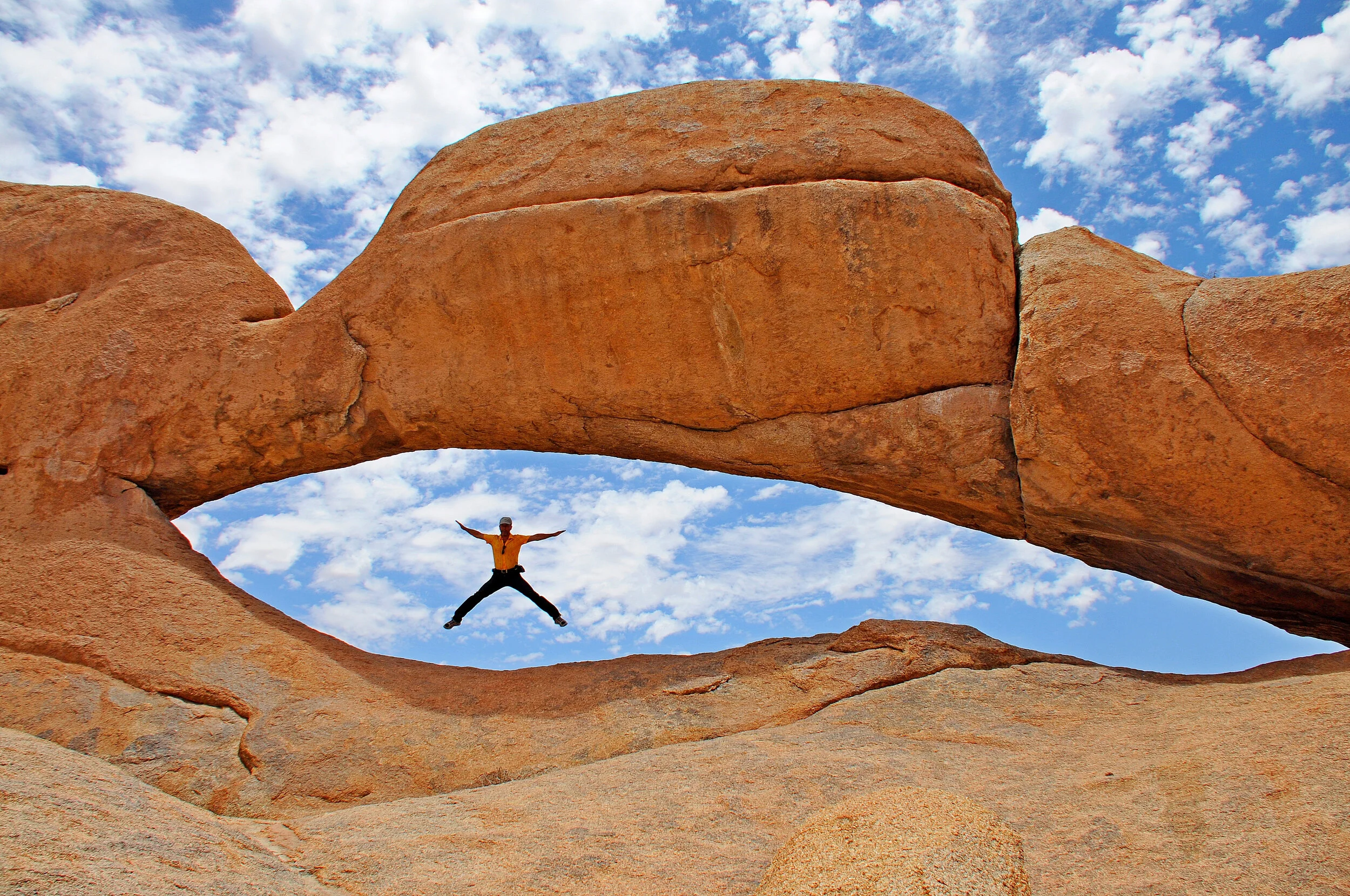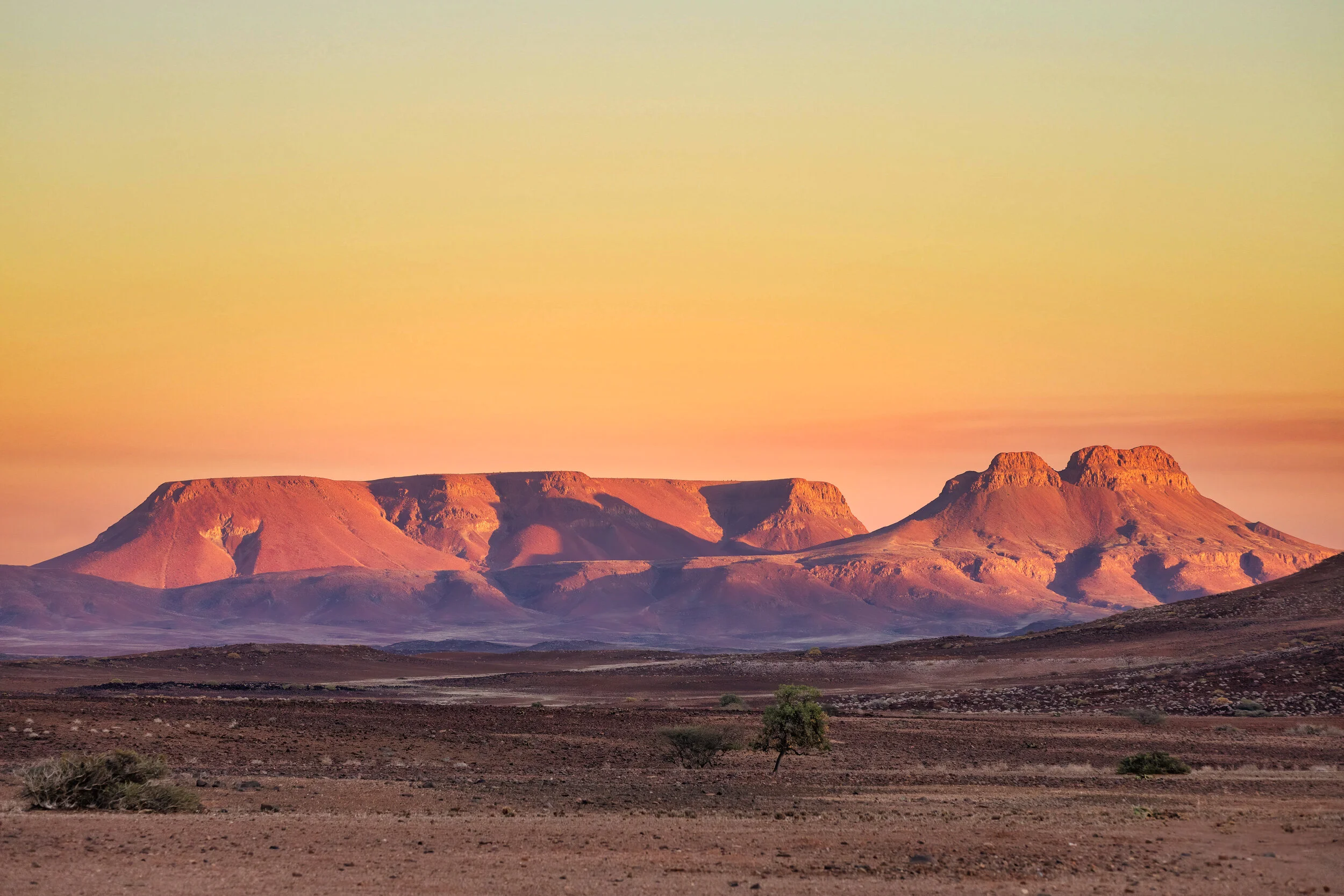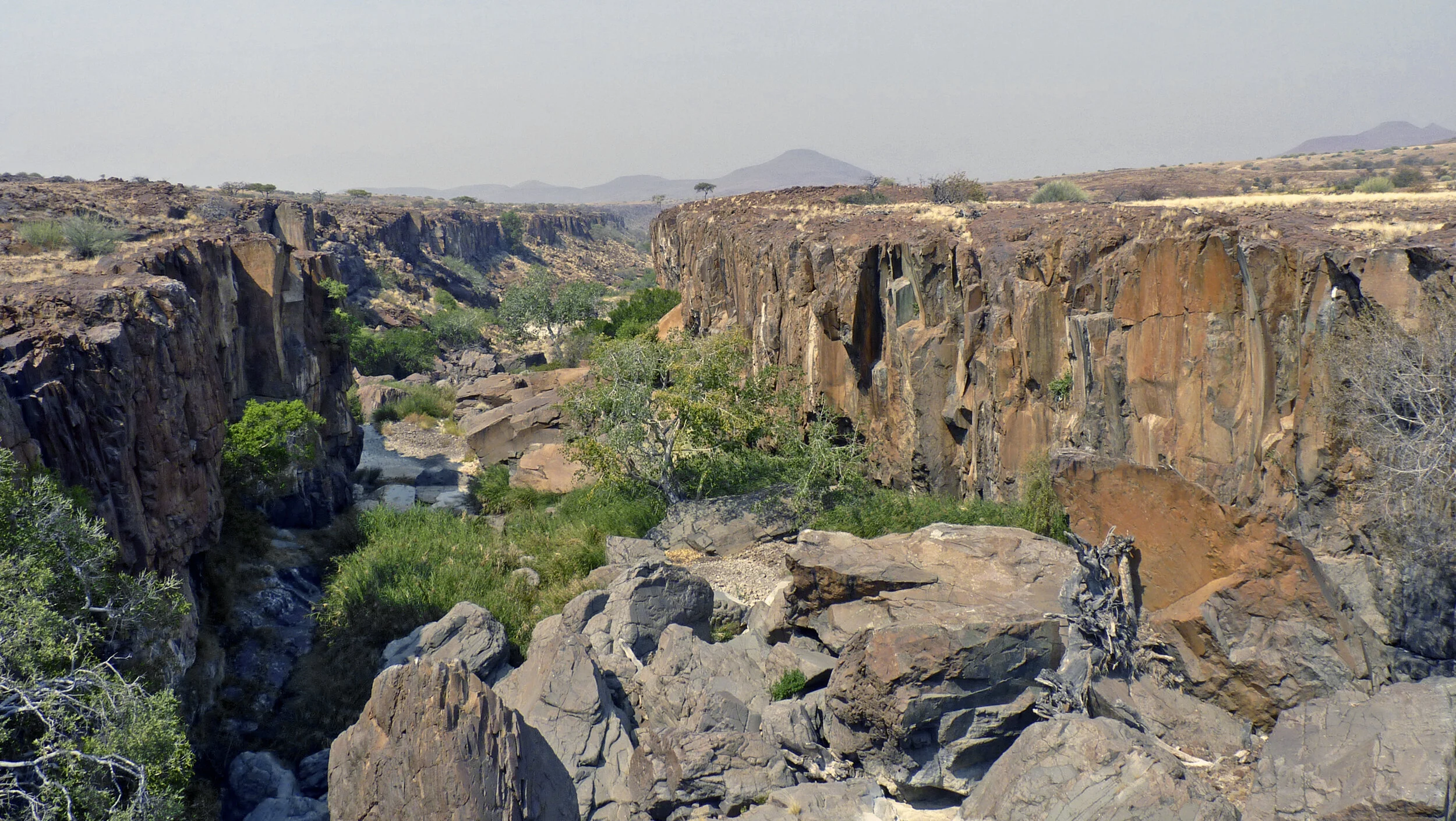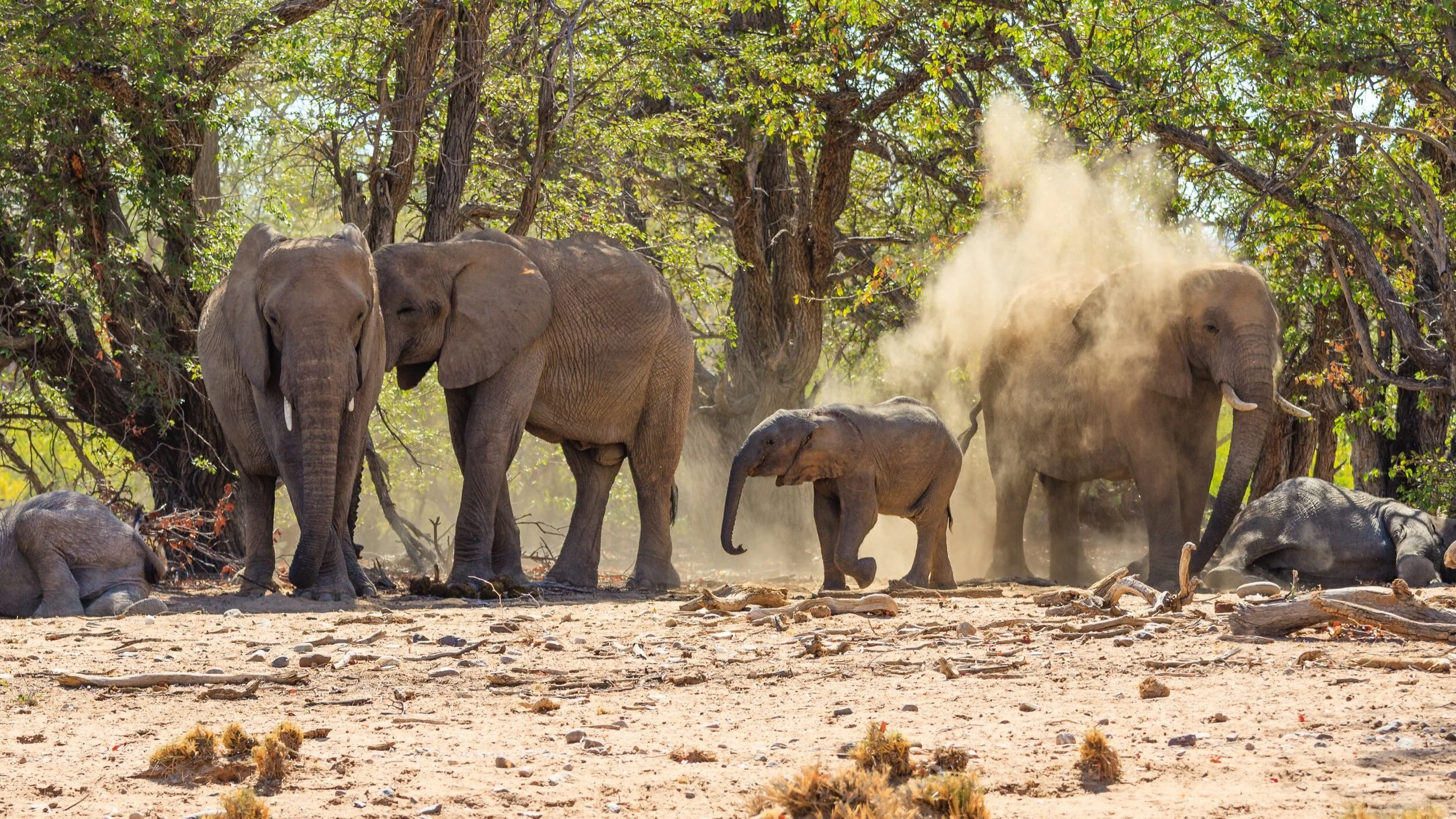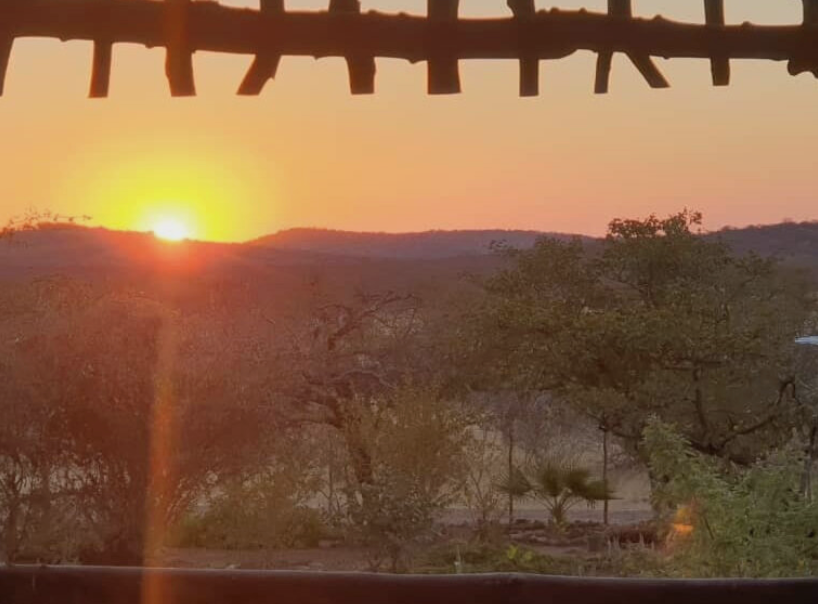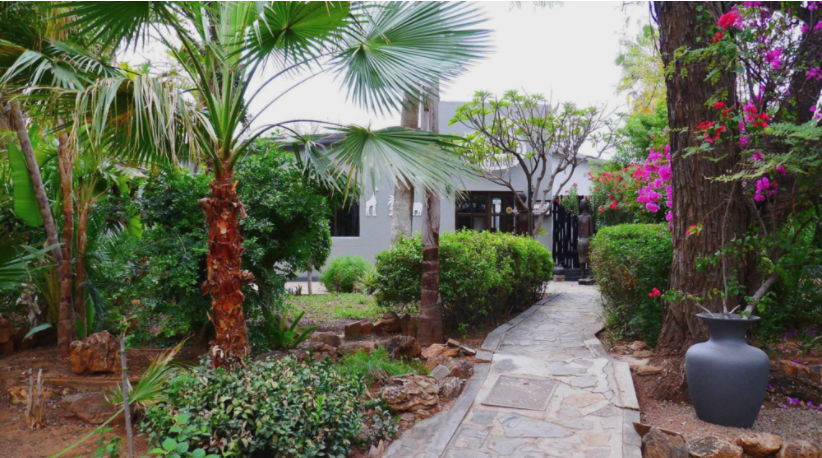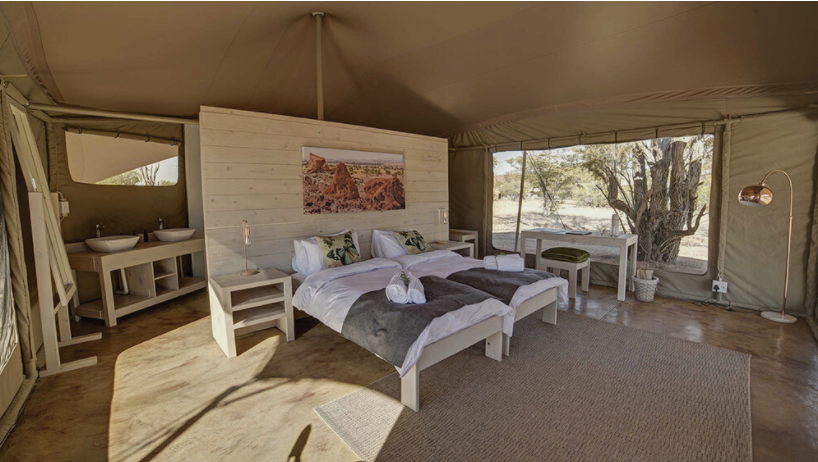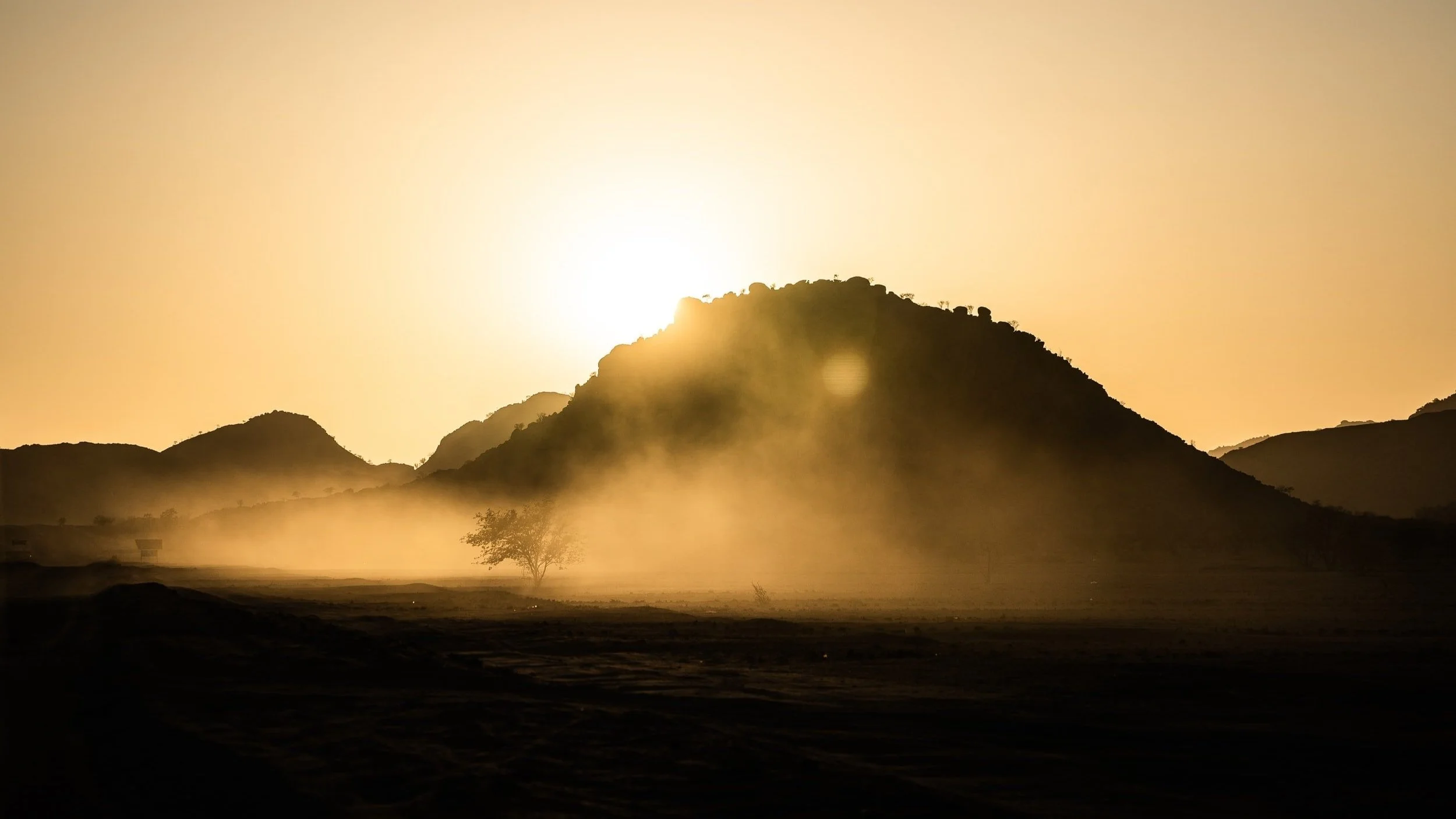A Complete Guide to Damaraland
Written by Daryll Williams
While Namibia is perhaps most famous for its sweeping sands and magnificent game reserves, in between the dunes of Sossusvlei and the wildlife sanctuary that is Etosha National Park, there lies a lesser-known treasure worth exploring: Damaraland, with its wildly untamed landscapes.
The region is named for the people who lived there – the Damara. Very little is known about their origins, but it is thought that they are a remnant population of hunter-gatherers, who came from the equatorial rain forest. Occupying the area for thousands of years alongside the San, the Damara had a similar lifestyle. They also cultivated crops and were even able to work iron into knives, ornaments, and spearheads. However, the true historic value of Damaraland even predates the Damara people that lived there.
Today, this is a stark and remote land of rocky, rugged desert and red-brown lava landscapes. There’s aeons-old rock engravings to be found, sky-high mountaintops to ascend, and a cast of desert-adapted characters to see, such as elephant, rhino, zebra, and lion, which eke out an existence in this near-barren region. This combination of dramatic scenery, survival-hardened creatures, and ancient atmosphere makes Damaraland one of the country’s most authentic destinations and a requisite dust-kicking destination for adventurous travellers.
Location & how to get there
Damaraland is a sparsely populated area in the northwest of Namibia. In its most northern point, it borders on Damaraland North, which roughly starts in Twyfelfontein. Furthermore, in the south you’ll find the Brandberg massif and towards the west lies the Skeleton Coast.
How to get there
Namibia is custom-made for self-drive safaris, with easily navigable gravel roads and minimal traffic. One of the most commonly driven routes to Damaraland starts in Swakopmund – the adventure capital of Namibia’s Atlantic coast. For more activities and insights on the fun-filled area, read our Complete Guide to Swakopmund. From there, it’s approximately an hour's drive north to Henties Bay, stopping en route to admire the shipwrecks of Skeleton Coast. At Henties Bay, the road to Damaraland turns sharply inland.
If you're in Windhoek, however, you have two ways of getting to Damaraland: taking chartered flights from Eros airport, or driving yourself. If it’s the latter, you'll take the B1 route then branch C39 and take the road that goes past Khorixas. This drive takes about 7 hours, so make sure you have your snacks stocked up and playlist ready!
Alternatively, you could go from Etosha National Park – the nearest major point to Damaraland - and the drive would take about 4 hours.
Best time to go
A trip to Damaraland can be planned at any time of the year, but the humid and dry temperature can make certain months more comfortable than others.
The winter months, from June to September, are our favourite months to visit. While the nights get cold, the warm, sunny days average around 28°C. Rain is also a rarity. The region becomes arid during this time, so the vegetation, which consists mostly of shrubs and fynbos, will be brown and dry and seem like it couldn’t possibly survive until the next year. It always does though, and seeing this desert during the winter months will definitely give you a sense of awe in nature’s resilience. With water in short supply, animals begin to congregate around the few remaining waterholes, adding to the appeal as a great time to visit.
Summer, which stretches from December to March, happens to be the rainy season. Rain is not very common in Namibia at all, and when it does arrive it typically shows up in short but intense bursts. During the height of summer, the heat can become stifling, with temperatures climbing up to 40°C. However, the region springs to life during this period, and for a short time, you will be accompanied by lush greenery and vibrant surroundings.
The shoulder seasons of October to November (Spring) and April to May (Autumn), are also a very pleasant time to visit. The evenings and nights get warmer, and daytime temperatures climb to about 30°C. Spring, while mostly dry, will see the desert slowly come alive with the first signs of approaching rain as the animals themselves shake off their lethargy in anticipation for the abundance of water.
What to do
With such an astounding amount of natural beauty, it comes as no surprise that there are endless adventures to be had in Damaraland.
In western Erongo, the flattish semi-desert savannah stretches northwards with the horizon only interrupted by the distinctive peak of the Spitzkoppe, one of Namibia’s most recognisable landmarks and a magnet for rock-climbers (which has been featured on the cover of many holiday brochures). Its distinctive pointed peak – which has earned it the nickname “the Matterhorn of Africa” – measures 1.728m and towers around 700m above the surrounding desert plains.
Brandberg
Namibia’s most magnificent massif, the Brandberg, is visible from kilometres around, towering close to 2 km above the surrounding desert plains and shimmering like a mirage through the heated haze. Not only a fabulous, and little-explored, hiking destination, the Brandberg is also Namibia’s go-to spot for rock art.
Twyfelfontein
In the head of the shallow Huab Valley in southern Kunene, large sandstone slabs that have broken off the flat-topped escarpment lie in jumbled piles, their smooth surfaces covered with one of the continent’s greatest concentrations of rock engravings. They are collectively referred to as Twyfelfontein, meaning “uncertain spring” in Afrikaans, reflecting farmers’ fears about the local water source. This area is less frequented by tourists, especially much less by self-drivers, it is also much more remote and therefore much more expensive.
The Erongo Region is one of the largest of the 13 regions found in Namibia and received its name for the majestic Erongo Massif that dominates the area around Karibib, Omaruru and Usakos. Similarly to the Brandberg mountain range, the lack of rain in the area is countered by multiple water sources within the range itself, which provides the base for a wide variety of animals.
Made up largely of rolling, rocky hills, this 450.000-hectare concession is one of tranquil, sheer beauty and carries a surprising wealth of wildlife.
Wildlife & Safari
Besides its pervading feeling of prehistory, Damaraland is one of Southern Africa's most underrated wildlife-watching areas. A safari to Damaraland will offer not only potential sightings of the elusive desert elephants and black rhino, but also the oryx, zebra, lion, kudu, and springbok, who all inexplicably thrive between its rocky outcrops and scrubby plains.
The region is also home to around 250 species of birds, including many raptors and a host of local endemics – ask your camp or lodge for a specialist birding guide. This is best experienced in the summer months.
The different qualities of the landscape and its inhabitants also make this the ideal location for any photographer or cinematographer that wants to up their game. Capturing the essence of Damaraland is a challenge that will require determination and perseverance, but the results are guaranteed to be worth it.
Accommodation
Basic
The Brandberg Rest Camp is located in the village of Uis in the heart of Damaraland, an unspoiled rural area in Namibia, and finds itself in the shadow of the Brandberg mountain, which happens to be the highest mountain in Namibia. The camp provides accommodation for every kind of guest, ranging from Poolside rooms to Camping for those who prefer the outdoors.
Klein Eden Guest Farm
Located just outside the town of Omaruru within the greater Damaraland area, Klein Eden Guest Farm serves as a lush refuge amid barren surrounds. With various hiking trails, a boma area, and a perennially tranquil atmosphere, this is the perfect rest stop on your Namibian getaway.
Omapaha Traditional Hut
Located in Outjo, Omapaha Traditional Hut provides accommodation with an outdoor swimming pool as well as private parking for those on a self-driving journey. At the inn, each room is equipped with a desk and a private bathroom. It’s also within walking distance of Outjo Museum and a roadside picnic spot.
Mid-level
The Farmhouse B&B Beergarden CC
For those travelling to Etosha National Park, The Farmhouse B&B Beergarden CC is an ideal stopover. Guests have access to a communal lounge area. Wi-Fi internet access is available in the reception, and in the restaurant and bar area. The Farmhouse in Outjo also offers an on-site restaurant and beer garden that offers an à la carte menu with a wide variety of meals.
Set against granite boulders in the Erongo Mountain range, Ai Aiba Lodge is steeped in history. The rooms are tastefully furnished in African style with air conditioning and a safe for valuables, each with a private patio, en-suite shower and separate toilet. Furthermore, the area surrounding the lodge is famous for its countless rock painting sites, making it an easy entryway to exploring Namibia’s mystical natural surroundings.
Etosha Hotel
Etosha Hotel is situated in a 19th-century building that is surrounded by lush tropical gardens. The à la carte restaurant, operated by an Austrian chef, is open morning, noon, and night. A fully licensed bar is available, as well as a beer garden. Guests can also cool off in the swimming pool or enjoy the beauty of the surrounding gardens.
Fancy
Eldorado Guestfarm
This family-operated business, which is located on the Eldorado Farm in the heart of Etosha, boasts a swimming pool, a restaurant, bar, and views of the garden – managing to encompass true Namibian farm life, cuisine, and hospitality.
Neighbouring the western border of Etosha National Park, Hobatere Lodge offers guests a memorable Bushveld getaway deep within a wildlife concession, affording guests an exclusive opportunity to appreciate the abundance of free-roaming game and birdlife.
Situated on the banks of the Aba Huab River, Malansrus Tented Camp rises from underneath shady Mopane trees to create an environment that embraces tranquillity and understated luxury amid highly dramatic scenery. Guests have access to Namibia's most famous rock art and the area’s desert-adapted elephants.
How to Include Damaraland in your Namibia Adventure
This is a drama-land of terracotta mountains, ancient arts, and desert elephants, and it fits in perfectly with any Namibia travel itinerary.
Dunes & Safaris in 16 Days - enjoy Namibia’s desert adapted wildlife and landscapes on a 16-day adventure. Head out from the Kalahari Desert, stop over at Sossusvlei to enjoy its iconic dunes and clay pans via Swakopmund. Then, journey to Damaraland and Etosha before visiting the Waterberg Plateau!
The Namibian Classics - spend 13 nights exploring Namibia’s essential spots. Between Windhoek, Sossusvlei, Damaraland, and Etosha this adventure guarantees great experiences and pristine beauty.
Wild & Wonderful Namibia - on this epic, 13-night tour, you’ll have an immersive and luxurious Namibian wilderness experience featuring a wealth of wildlife, including the Big 5 and many beautiful birds, and pristine natural environments. Along the way, you’ll visit Windhoek, Waterberg, Etosha, Damaraland, Swakopmund, and Sossusvlei.
This is one of the few places in Africa where wildlife can be found outside of national parks or private game reserves, co-existing with traditional villages and farms.
A high clearance car is a must. The gravel roads are so dry that they will struggle to absorb water, creating mud and floodings when sudden rain showers arrive, which smaller vehicles can struggle with.
Buy your groceries in the bigger towns in advance, and cook your own meal at your accommodation or ensure there’s an in-house eatery, as there are not many restaurants in the region.
Damaraland showcases geology at its most extreme – burnt mountains, gravel plains and petrified forests. But like so much of Namibia, this area hides its magic until you spend a little time there. The soft light of dawn and dusk transforms jagged mountain ranges into layers of soft colours, golden grasslands sweep between acacia forests, and the glittering night sky is truly magnificent.
So what are you waiting for? Book a perfect African getaway with Viatu.

